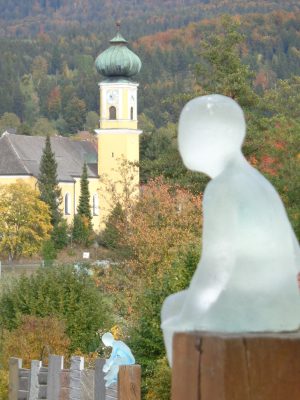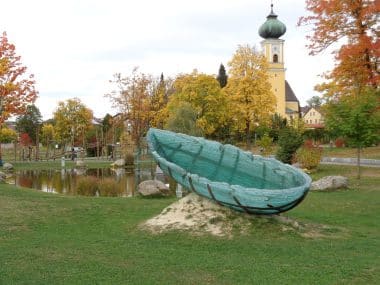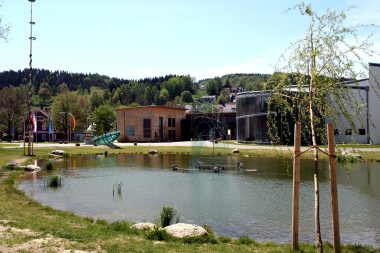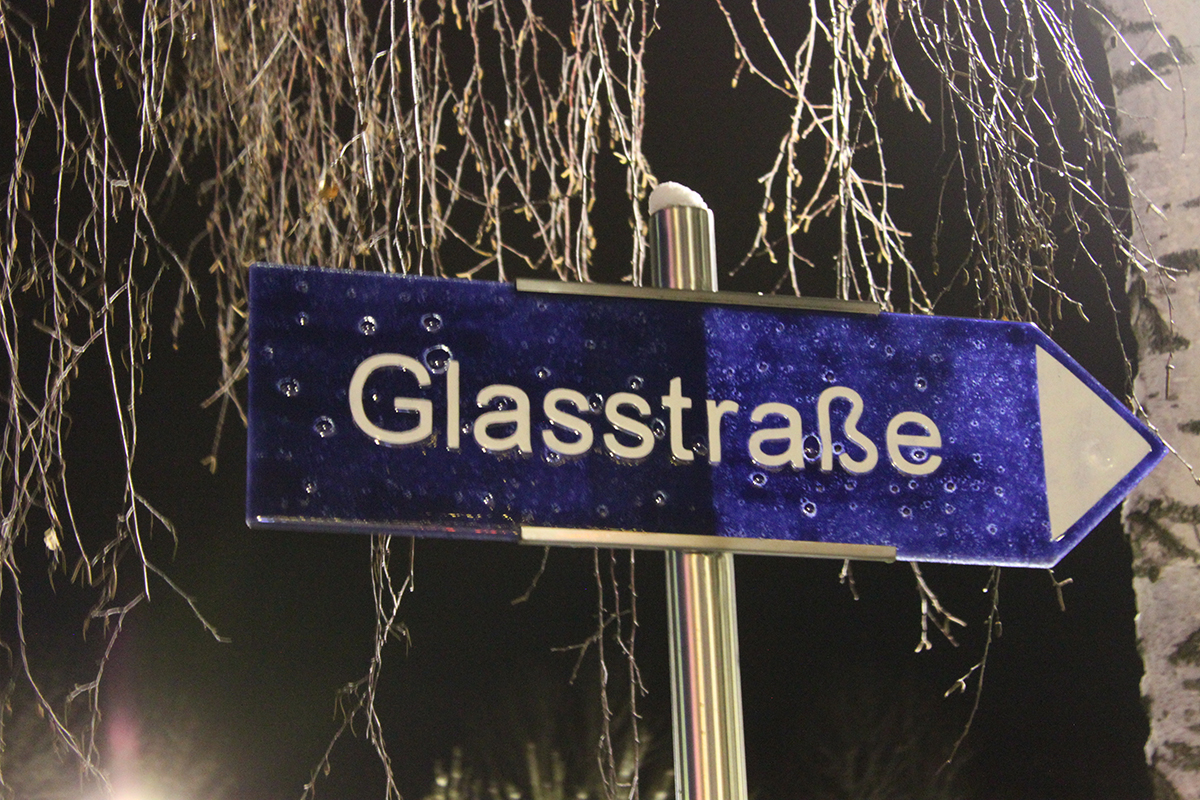In their creative work, the glassblowers in the Bavarian Forest are apparently growing wings. The products of this very old craft can be seen in the workshops on the edge of the Glass Road. And it is 250 kilometres long and a holiday route between Waldsassen on its northern periphery and Passau on the Danube. In the meantime, the Glass Road has become a tourist highlight in the Bavarian Forest and has also secured a permanent place in the advertising of tourism managers in this region. It is a playground of the imagination, and anyone who stops by the glassworks will be thrilled by the diversity of this art and the creative power of these artists.

Glass is closely linked to the history of mankind. This material already existed in the Stone Age, and around 3000 BC, objects were demonstrably made of glass in Egypt and in the high culture of Mesopotamia. Scientists discovered the recipe on a clay tablet from Babylonia that still inspires glassblowers. Quartz sand, lime, potash and soda are the basic elements that the craftsmen in the Bavarian Forest used as early as the 14th century. At that time, the so-called “itinerant glassworks” were built there for the purpose of operating for a short time wherever there was no shortage of wood to make the glass glow in the smelting furnaces.
The glassblowers still feel committed to this ancient tradition, and the products from their glassworks in the Bavarian Forest have found sympathisers all over the world for generations. The Glass Road leads through a fascinating landscape and invites you to watch the craftsmen at work or to enjoy their products in the shops at numerous stations. This holiday route was designed in 1997 by three men who felt connected to the region. It was then opened by the then Federal Chancellor Helmut Kohl. A total of 48 municipalities and eight districts in eastern Bavaria are members of the Glasstraße working group, which was founded at the time.

The glassworks can not only be reached by car, but also stations on interesting hikes on the edge of the Goldsteig, the Gläserner Steig, the Glasschleiferweg and the popular Glashüttenwanderweg. Everywhere the fragile beauties can be admired – and of course also purchased. Frauenau has earned the reputation of being the “Glass Heart” of the Bavarian Forest. There are several manufactories here. Among them is the oldest glassworks in Germany, the family business of Benedikt Freiherr von Poschinger. For fifteen generations now, the company has been dedicated to glass production, and the foundation of the glassblowing workshop dates back to 1568. At that time, historical writings provided instructions for the production of everyday objects in the form of glasses and bottles. In the meantime, the Poschingers’ works of art can even be found in airplanes and as interiors on expensive yachts.
If you want to learn more about the history of this craft, you should go to the Bavarian Forest State Glass Museum in Frauenau and thus go on a journey of discovery through the centuries. The Czech champion Petr Novotny greets visitors there with a glass tree. You should take your time for a walk through the Glass Gardens of Frauenau, because the path is three kilometres long.

There are apparently no limits to the imagination of the glassblowers. And so another hike leads through a forest of glass. In the small village of Regen and at the foot of the Weißenstein castle ruins, the artist Rudolf Schmid created a total of thirty trees made of flat glass. They are up to eight meters high. Their leaves do not rustle, but they produce unique light effects. It is also worth visiting here after dark, when several floor washlights illuminate this unusual glass forest.
The craft of glassblowing is timeless and cannot be replaced by any modern machine. A stay in Bodenmais also promises moments of happiness. Not only because of the natural beauty of the surroundings and the hospitable people who live here, but also because of the products from the think tank of the JOKA Glass Paradise. Among other things, the largest wine beer glass in the world was created in this glassblowing workshop. It was an extraordinary challenge to produce the drinking vessel, which is over one meter high. Several glassblowers had to roll up their sleeves to transport the glowing glass ball out of the melting furnace. The largest hand-blown Christmas bauble ever formed can also be seen there. It has a diameter of sixty centimeters.
All glassblowing workshops along the Glass Route in the Bavarian Forest have their own character. For example, the artists in the glass village of Arnbruck attach particular importance to the harmony between glass and nature, while in the Herrmann Gallery in Drachselsried about 150 international artists from thirty nations present their objects. The town of Zwiesel has always been closely linked to the craftsmanship of glassblowing. The factory outlet of Kristallglas AG is still an attraction for many visitors. The traditional company donated a pyramid of exactly 93,665 glasses to the city of Zwiesel. That was also a world record. In May 2003, a glass chapel with a glass bell and a glass tower was built in this village. Without a doubt, this is also one of the many highlights on the path of the glassblowers. Colourful, timelessly beautiful and now and then also afflicted with a pinch of cheekiness are the glass pictures from the studio oven of the Köck family in Riedlhütte.
In the glassblowing workshops, visitors not only have the opportunity to watch the artistically talented craftsmen at work. Every now and then they are even asked to try to make balls themselves from a fiery, liquid mass


